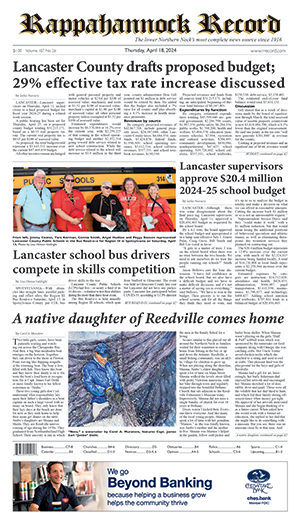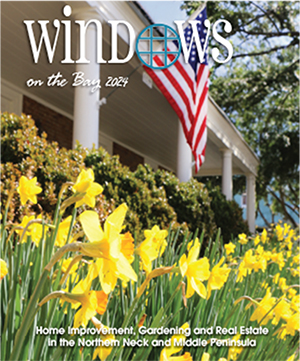by Henry Lane Hull
As I hope every school-age child knows, the Northern Neck produced three of the first five U.S. Presidents, Washington, Madison and Monroe, although all three left at an early age and made their marks on history elsewhere. Washington and Monroe were born in Westmoreland County, not far from the Potomac River, and Madison in King George on the shores of the Rappahannock at Port Conway.
Last Saturday my Good Wife and I, concentrating on Madison, traveled up to Orange County to visit his newly restored home, “Montpelier.” The property is owned by the National Trust for Historic Preservation and administered by a foundation that has undertaken the restoration.
Madison died there in 1836, and is buried with his wife, Dolley, on the grounds of the plantation in the family cemetery. From 1901 until 1983 the property was owned by the William duPont family and was left to the National Trust by Marion duPont Scott upon her death in 1983. I first visited the estate shortly thereafter, when its appearance reflected more of the duPont heritage than that of the Madisons.
The brick mansion was covered in stucco and had been enlarged extensively with wings and additional stories, the most memorable feature of which was the added Tack Room in the Art Deco style. That feature and a neo-classical ballroom now have been reinstalled in the visitor center as surviving testimonies of the duPont period. The landscape remained in the duPont configuration, reflecting the family’s interest in horse racing and being peppered with numerous Sears Roebuck-style farm buildings from the early 20th century. All evidence of the homes of the slaves was gone and the only Madison-era surviving outbuilding was the neoclassical domed icehouse.
That situation changed after 1997 with the death of Paul Mellon, the philanthropist son of Andrew Mellon, the former Secretary of the Treasury and founder of the National Gallery of Art, who left $20 million for the restoration of Montpelier. The work began soon thereafter and has afforded a great opportunity for the public to witness the work in progress.
The stucco has been removed exposing the original brick façade, the duPont additions deleted and the interior returned to the rooms’ original dimensions. Today the visitor sees the house largely as James and Dolley Madison lived in it, augmented by the addition of a number of Madison family antiques. The grounds retain the extensive formal duPont brick walled garden and slave dwellings are being reconstructed on their original sites, interestingly showing the different living conditions between the domestic workers and those who labored in the fields.
We lingered in the house and inspected the slave dwellings that were open to the public and then embarked on a three-mile hike along the paths of the James Madison Landmark Forest, a repository of old growth trees and other vegetation that presents nature in its most pristine state. Beyond the Landmark Forest is a managed forest area that demonstrates what can be achieved through proper forest stewardship.
Over the 30 years that Montpelier has been open for public visitation, I have made the tour four times, the last being nine years ago when the mansion was undergoing its restoration. This time was different from the others, not as much due to the completion of the structural work and the new presentation of the home, but more because of the added presence of the slave quarters.
To visit the home of the Father of the U.S. Constitution and principal author of the Bill of Rights, and be confronted directly with the reduced conditions in which his hundred slaves lived in juxtaposition to his own lifestyle leaves one with dichotomous memories upon departure. Madison envisioned the Constitution in his book-lined study above the entrance hall at Montpelier, but nearly two centuries would pass before the descendants of his slaves could enjoy the full freedoms that he described in universal terms. Perhaps his true legacy rests in his having conceived of a document that one day could make such a course possible.
Today’s visit to Montpelier is memorable in many respects.











